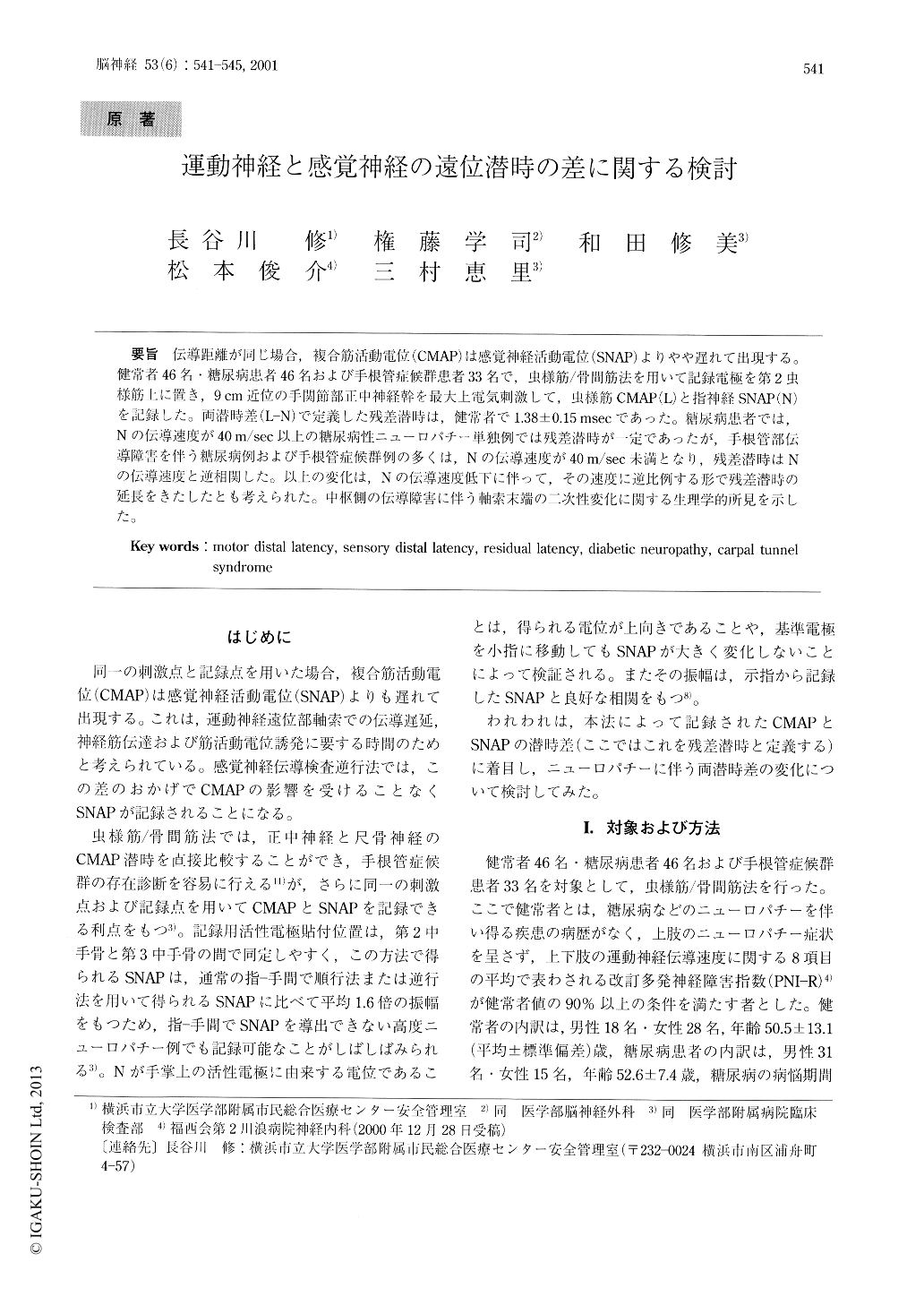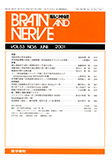Japanese
English
- 有料閲覧
- Abstract 文献概要
- 1ページ目 Look Inside
伝導距離が同じ場合,複合筋活動電位(CMAP)は感覚神経活動電位(SNAP)よりやや遅れて出現する。健常者46名・糖尿病患者46名および手根管症候群患者33名で,虫様筋/骨間筋法を用いて記録電極を第2虫様筋上に置き,9cm近位の手関節部正中神経幹を最大上電気刺激して,虫様筋CMAP(L)と指神経SNAP(N)を記録した。両潜時差(L-N)で定義した残差潜時は,健常者で1.38±0.15msecであった。糖尿病患者では,Nの伝導速度が40m/sec以上の糖尿病性ニューロパチー単独例では残差潜時が一定であったが,手根管部伝導障害を伴う糖尿病例および手根管症候群例の多くは,Nの伝導速度が40m/sec未満となり,残差潜時はNの伝導速度と逆相関した。以上の変化は,Nの伝導速度低下に伴って,その速度に逆比例する形で残差潜時の延長をきたしたとも考えられた。中枢側の伝導障害に伴う軸索末端の二次性変化に関する生理学的所見を示した。
In motor nerve conduction studies compound mus-cle action potentials (CMAPs) appear later than sen-sory nerve action potentials (SNAPs) . This time lag originates from the conduction delay at the distal mo-tor axon, neuromuscular transmission time and mus-cle action potential induction time. To investigate the latency difference between CMAPs and SNAPs we studied 46 healthy individuals, 46 patients with diabe-tes mellitus and 33 patients with carpal tunnel syn-drome, using the lumbrical and interossei recording method.

Copyright © 2001, Igaku-Shoin Ltd. All rights reserved.


